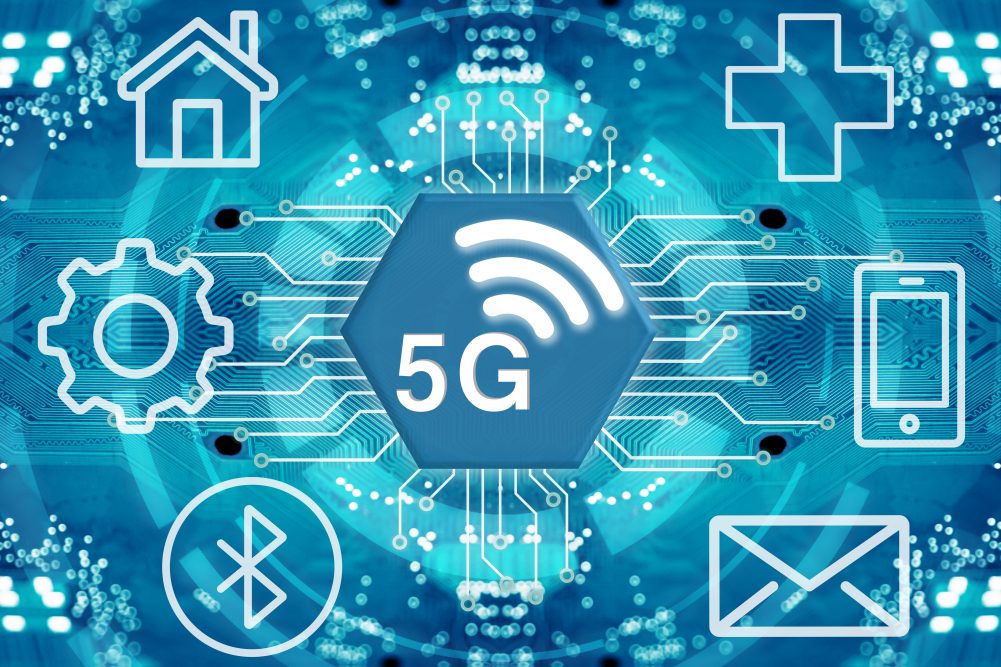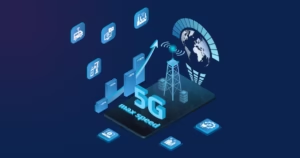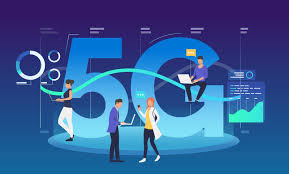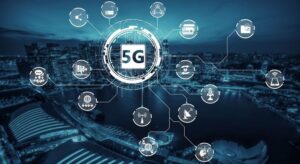The introduction of 5G technology represents the next generation of wireless communication, promising faster speeds, lower latency, and more reliable connectivity than its predecessors. 5G, which stands for the fifth generation of mobile networks, is poised to revolutionize not only how we connect to the internet but also how businesses, industries, and even governments operate in the digital world.
With its advanced capabilities, 5G technology is expected to have a far-reaching impact, from improving consumer mobile experiences to enabling cutting-edge advancements in industries such as healthcare, manufacturing, transportation, and more. As telecom providers continue to roll out 5G networks globally, it’s crucial to understand how 5G works, the opportunities it offers, and the potential challenges that come with its widespread adoption.
How 5G Technology Works
At its core, 5G operates by using higher frequency bands than previous generations (such as 4G), allowing for faster transmission speeds and more bandwidth. 5G technology is designed to work through a combination of different types of networks and technologies, including:
- Millimeter Waves: These are higher-frequency radio waves (between 30 GHz and 300 GHz) that offer a significantly higher capacity for data transmission compared to the radio waves used in 4G. They allow for much faster speeds and more data to be transmitted simultaneously.
- Small Cell Networks: Unlike traditional cell towers, 5G networks use small, low-power cells that are placed closer together. These small cells help ensure faster and more reliable communication by providing a more direct and concentrated connection to devices, reducing interference and congestion.
- Massive MIMO (Multiple Input, Multiple Output): This technology uses multiple antennas to send and receive more data at once, significantly improving the capacity and efficiency of 5G networks.
- Beamforming: This technology allows signals to be directed at specific devices rather than being broadcast in all directions. It increases both the efficiency and range of the network.
Benefits of 5G Technology
- Faster Speeds and Low Latency: One of the most talked-about benefits of 5G is its significantly faster speeds. With 5G, users can download files, stream videos, and browse the internet at speeds much higher than those available on 4G networks. Download speeds can reach up to 10 Gbps, which is nearly 100 times faster than the maximum speed on 4G. Additionally, 5G reduces latency, the time it takes for data to travel from one point to another, making it ideal for real-time applications like online gaming, video conferencing, and autonomous vehicles.
- Improved Connectivity and Network Reliability: 5G networks provide more reliable connections, even in crowded areas like sports stadiums, concert venues, and urban centers. Thanks to small cell networks and beamforming, 5G ensures stable connections even with high network traffic. It also promises broader coverage in remote and underserved areas, helping close the digital divide.
- Enabling the Internet of Things (IoT): 5G is a game-changer for the Internet of Things (IoT), which involves the interconnectivity of various smart devices—ranging from home appliances to industrial machines. With 5G, millions of devices can be connected simultaneously, enabling the development of smarter cities, homes, and industries. For example, smart traffic management systems can help reduce congestion, while health-monitoring devices can provide real-time data to doctors for better patient care.
- Advancing Industries: 5G is set to revolutionize various industries by enabling new technologies and business models. In healthcare, for example, 5G could facilitate remote surgeries and telemedicine with real-time video and data transfer. In transportation, autonomous vehicles will rely on ultra-fast and low-latency connections to communicate with each other and with infrastructure, reducing accidents and optimizing traffic flow. Manufacturing will also benefit from 5G through enhanced automation, remote monitoring, and improved supply chain management.
- Better User Experience for Mobile Devices: The improved data speeds and lower latency of 5G will enhance the mobile user experience, particularly in areas such as mobile gaming, augmented reality (AR), and virtual reality (VR). High-definition streaming of movies, VR gaming, and AR applications that require heavy data processing will be more efficient, offering users an immersive experience with fewer disruptions.
Challenges and Concerns of 5G Technology
While 5G holds great promise, its widespread deployment also presents a range of challenges and concerns that need to be addressed:
- Infrastructure and Deployment Costs: The rollout of 5G requires significant investment in infrastructure, including the installation of small cell towers and upgrading existing networks. This process can be costly and time-consuming, especially in rural areas or developing countries. Ensuring a smooth and equitable deployment across all regions is critical for maximizing the potential benefits of 5G.
- Security and Privacy Risks: As 5G enables more devices to be interconnected, it also creates more entry points for cyberattacks. Ensuring the security and privacy of users and their data will be crucial to the success of 5G. Additionally, the rise of IoT and connected devices could increase the risk of hacking, data breaches, and other security threats if not properly managed.
- Health Concerns: Some individuals have raised concerns about the potential health effects of 5G, specifically regarding the exposure to electromagnetic radiation emitted by the increased number of small cell towers and higher-frequency millimeter waves. While current research suggests that 5G is unlikely to pose a significant health risk, these concerns remain a topic of debate.
- Regulatory and Standardization Challenges: The implementation of 5G technology requires global cooperation to create common standards and regulations. Governments and telecom companies need to work together to ensure a seamless transition to 5G networks and address regulatory hurdles related to spectrum allocation, privacy protection, and cross-border communication.
- Environmental Impact: The increased need for more infrastructure, including small cells and new towers, may have an environmental impact. Managing waste, energy consumption, and other ecological factors during the 5G rollout will be essential to minimize the technology’s carbon footprint.
Conclusion
5G technology is set to transform the way we live, work, and communicate by enabling faster speeds, greater connectivity, and more reliable networks. While its benefits are vast, ranging from revolutionizing industries to enhancing consumer experiences, there are challenges that must be addressed to ensure its successful deployment. With continued investment in infrastructure, cybersecurity, and global cooperation, 5G has the potential to bring about a new era of innovation and connectivity that can positively impact economies, societies, and individuals worldwide.




